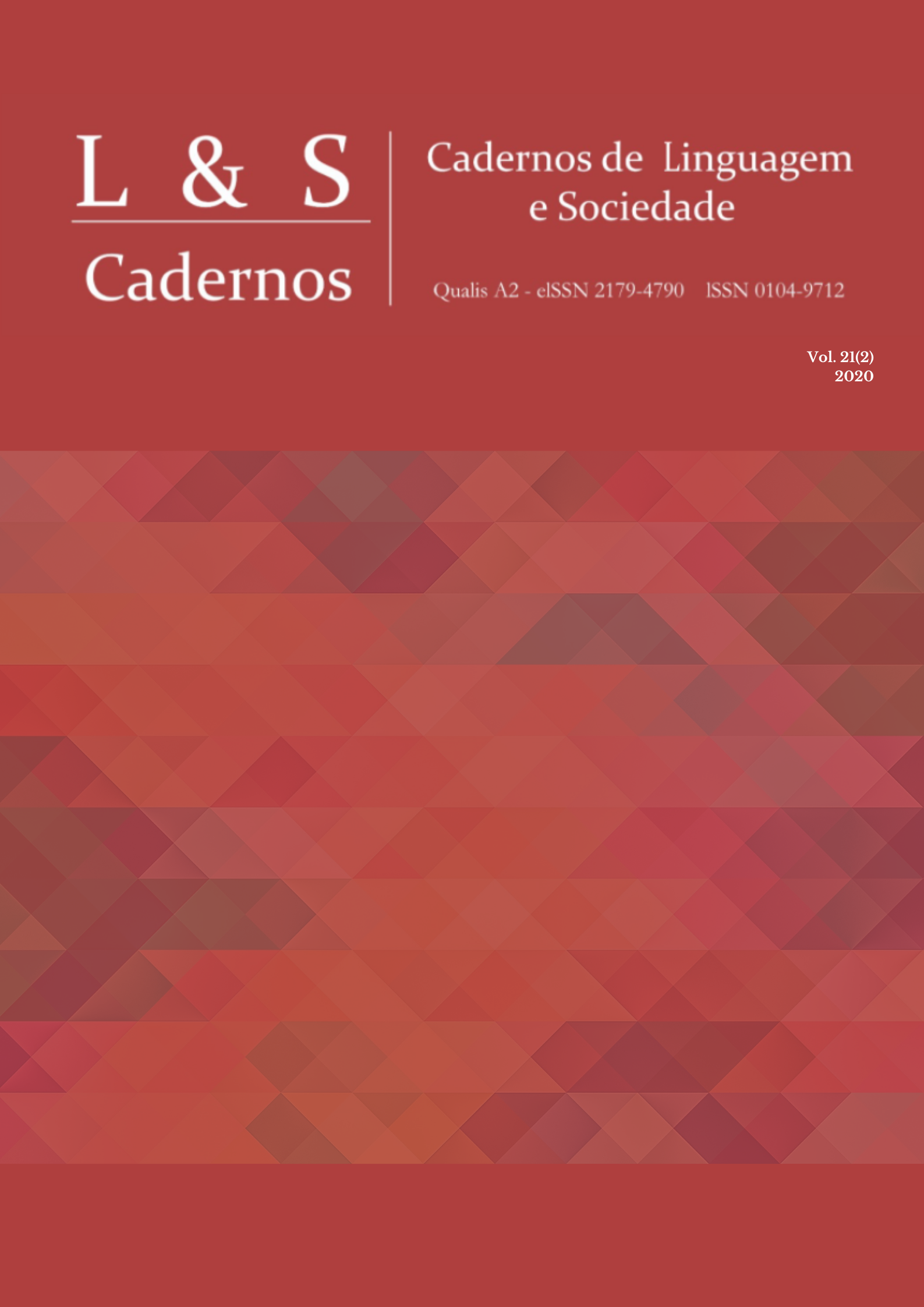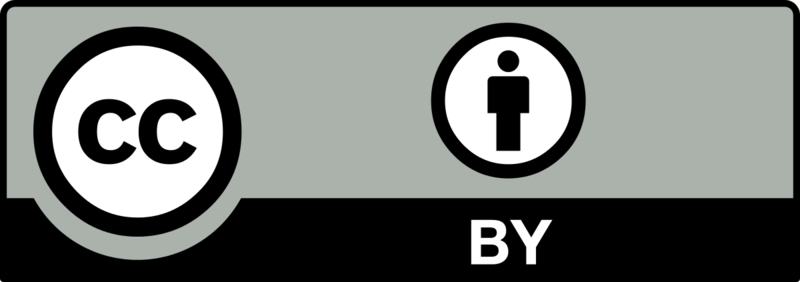Developing minority languages at home: an evidence-based study with reception children in Spain
DOI:
https://doi.org/10.26512/les.v21i2.28144Palavras-chave:
Aquisição linguística, Bi-/Multilinguíssimo, Educação bilíngue, Sistema de linguagem familiar, Língua minoritária, ReceptionResumo
Este documento examina a situação atual das famílias monolíngues e bi-/multilíngues sobre a forma como ajudam os seus filhos, estudantes de Reception (4-5 anos de idade) numa escola britânica em Madrid, Espanha a adquirir, preservar e melhorar as línguas minoritárias em casa. Os resultados mostram contrastes entre famílias monolíngues e famílias bi/multilíngues, embora a maioria aplique sistematicamente recursos "naturais" (One Language-One Person, por exemplo) ou ferramentas (leitura ou televisão, por exemplo). Entre outras recomendações finais, recomenda-se uma colaboração mais estreita entre as escolas e os pais, a fim de ajudar mais eficazmente no desenvolvimento da (multi-)língua dos meninos/as.
Downloads
Referências
ALAM, A.; UZZMAN, M. Learning vocabulary at tertiary level: Strategies, techniques, and materials. The Online Journal of New Horizons in Education. Sakarya, v. 8, n. 3, p. 109-117, 2018. Retrieved from: http://www.tojned.net/. Access: September 7, 2018.
AL-QAHTANI, A. The phenomenon of code-switching and code-mixing as practiced among faculty members in a Saudi university. Phenomena in Urban Society Conference. Surabaya, Indonesia, 2014.
BAKER, C. A Parent’s and teacher’s guide to bilingualism. Bristol: Multilingual Matters, 2014.
BAKER, C. Foundations of bilingual education and bilingualism. Clevedon: Multilingual Matters, 2011.
BALL, J. Enhancing learning of children from diverse language backgrounds: Mother tongue-based bilingual or multilingual education in early childhood and early primary school years. UNESCO International Symposium: Translation and Cultural Mediation. Paris, 2010. Retrieved from: http://www.ecdip.org/docs/pdf/UNESCO%20Summary%202010-1.pdf. Access: July 25, 2019.
BARRON-HAUWAERT, S. Bilingual siblings: Language use in families. Bristol: Multilingual Matters, 2011.
BASNIGHT-BROWN, D. M.; ALTABIRRA, J. Differences in semantic and translation priming across languages: the role of language direction and language dominance. Memory & Cognition New York, v. 35, p. 953-965, 2007.
BIRULÉS-MUNTANÉ, J.; SOTO-FARACO, S. Watching subtitled films can help learning foreign languages. PLOS One. San Francisco, v. 11, n. 6, p. 1-10, 2016.
BONFIGLIO, C. How to raise a bilingual child-choose your method. Bilingual Kidspot, 2016. Retrieved from: https://bilingualkidspot.com/2016/05/30/how-to-raise-a-bilingual-child/. Access: July 1, 2010.
BOSMA, E.; BLOM, E. A code-switching asymmetry in bilingual children: code-switching from Dutch to Frisian requires more cognitive control than code-switching from Frisian to Dutch. International Journal of Bilingualism. Thousand Oaks, v. 23, n. 6, p. 1-17, 2018.
BYERS-HEINLEIN, K.; LEW-WILLIAMS, C. Bilingualism in the early years: What the science says. Learn Landscape. Quebec, v. 7, n. 1, p. 95-112, 2013.
CENTENO, O. Code-switching vs. Borrowing in bilingual children. Bilingual Kids Rock. 2014. Retrieved from: https://bilingualkidsrock.com/code-switching-vs-borrowing-in-bilingual-children/. Access: September 7, 2018.
COKELY, M. Language dominance, preference and awareness: A case study of two multilingual children in a bilingual community. MA Dissertation, University of Barcelona, Spain, 2012.
CUNLIFFE, D.; MORRIS, D.; PRYS, C. Investigating the differential use of Welsh in young speakers’ social networks: A comparison of communication in face-to-face settings in electronic texts and on social networking sites. In: JONES, E. H. G.; URIBE-JONGBLOED, E. (ed.). Social media and minority languages: Convergence and the creative industries. Bristol: Multilingual Matters. p. 75-86.
DE HOUWER, A.; BORSTEIN, M. H. Bilingual mothers’ language choice in child-directed speech: Continuity and change. Journal of Multilingual and Multicultural Development. London, v. 37, n. 7, p. 680-693, 2016.
DE HOUWER, A. Parental language input patterns and children's bilingual use. Applied Psycholinguistics. Cambridge, v. 28, p. 411-424, 2007.
DE HOUWER, A. The role of language input environments for language outcomes and language acquisition in young bilingual children. In: MILLER, D. et al. (ed.). Bilingual cognition and language: The state of the science across its subfields. Clevedon: Multilingual Matters, 1992. p. 127-154
FORD, C. Children should start learning languages at age three. The Telegraph, 2014. Retrieved from: https://www.telegraph.co.uk/education/educationopinion/11151726/Children-should-start-learning-languages-at-age-three.html. Access: June 25, 2018
FORTUNE, T.; TEDICK, D. (ed.). Pathways to multilingualism: Evolving perspectives on immersion education. Clevedon: Multilingual Matters, 2008.
GARDNER-CHLOROS, P. Code switching. Cambridge: Cambridge University Press, 2010.
GREGERSEN, F.; THORGERSEN, J. (ed.). English in nordic universities: Ideologies and practices. Amsterdam: John Benjamins Publishing Company.
GROSJEAN, F. Another view of bilingualism. In: HARRIS, R. J. (ed.). Cognitive processing in bilinguals. Advances in psychology. Oxford: North-Holland, 1992. p. 51-62.
GROSJEAN, F. Bilingual: Life and reality. Cambridge: Harvard University Press, 2010.
GROSJEAN, F. One person-one language bilingual children: The amazing beginning of modern OPOL. Psychology Today, 2015. Retrieved from: https://www.psychologytoday.com/us/blog/life-bilingual/201504/one-person-one-language-and-bilingual-children. Access: April 1, 2020.
GRUSZCZYNSKA, A. Maintenance and non-maintenance of community language in immigrant families: the case of Polish parents in the UK. Globalisation, Societies and Education. London, v. 37, p. 1-19, 2019.
HAMAN, E. et al. How does L1 and L2 exposure impact L1 impact L1 performance in bilingual children? Evidence from Polish-English migrants to the United Kingdom. Frontiers in Psychology. Brussels, v. 8, 2017. Retrieved from: https://www.ncbi.nlm.nih.gov/pmc/articles/PMC5591580/. Access: April 1, 2020.
HIROSH, Z.; DEGANI, T. Direct and indirect effects of multilingualism on novel language learning: An integrative review. Psychonomic Bulletin and Review. New York, v. 25, n. 3, p. 892-916, 2017.
HOFWEBER, J. E. The effects of code-switching on bilinguals' executive functions. PhD thesis-University of Reading, England, 2017.
HUMAIRAH, B. Code switching and code mixing in English classroom. Humairah Bima. 2012. Retrieved from: http://humairahbima.blogspot.com/2012/05/code-switching-and-code-mixing-in.html. Access: 25 jun. 2018.
JISA, H. Language mixing in the weak language: Evidence from two children. Journal of Pragmatics. London, v. 32, n. 9, p. 1363-1386, 2000.
KEBEYA, H. Inter- and intra-sentential switching: are they really comparable? International Journal of Humanities and Social Science. Los Angeles, v. 3, n. 5, p. 225-233, 2013.
KIM, Y. Y. Intercultural personhood: Globalization and a way of being. International Journal of Intercultural Relations. New York, v. 32, n. 4, p. 359-368, 2008.
KING, K., FLOGE, L.; LOGAN-TERRY, A. Family language policy. Language and Linguistics Compass, v. 2., n. 5, p. 907-922, 2008.
KUHL, P. The linguistic genius of babies. TEDx. 2010. Retrieved from: https://www.ted.com/talks/patricia_kuhl_the_linguistic_genius_of_babies#t-454235. Access: July 10, 2018.
LEE, M. et al. Raising bilingual children: A qualitative study of parental attitudes, beliefs, and intended behaviors. Hispanic Journal of Behavioural Sciences. Thousand Oaks, v. 37, n. 4, p. 503-521, 2015.
LINDSTRÖM, J.; SYLVIN, J. (2014). Local majority and minority languages and English in the university. The University of Helsinki in a Nordic comparison. In: HULTGREN, A. K.; GREGESEN, F.; THORGERSEN, J. (ed.), English in nordic universities: Ideologies and practices. Amsterdam: John Benjamins, 2014. p. 147-164.
MABULE, D. What is this? Is it code switching, code mixing or language alternating? Journal of Educational and Social Research. Karachi, v. 5, n. 1, p. 339-350, 2015.
MACKENZIE, P. School choice in an international context. Journal of Research in International Education. Thousand Oaks, v. 9, n. 2, p. 107-123, 2010.
MORRISON, D. Code switching. Encyclopaedia Britannica, 2017. Retrieved from: https://www.britannica.com/topic/code-switching. Access: September 7, 2018.
NIKLAS, F.; COHRSSEN, C.; TAYLER, C. The sooner, the better: early reading to children, SAGE Open. Thousand Oaks, v. 6, n. 4, p. 1-11, 2016.
OECD. The future of families to 2030: A synthesis report. Organization for Economic Cooperation and Development. Retrieved from: https://www.oecd.org/futures/49093502.pdf. Access: November 7, 2019.
PARADIS, J. et al. Bilingual children's acquisition of the past tense: A usage-based approach. Journal of Child Language. Cambridge, v. 38, p. 554-578, 2011.
PARADOWSKI, M. B.; BATOR, A. Perceived effectiveness of language acquisition in the process of multilingual upbringing by parents of different nationalities. International Journal of Bilingual Education and Bilingualism. Abigdon-on-Thames, v. 21, n. 6, p. 647-665, 2018.
PAWLAK, M. Error correction in the language classroom: Reconsidering the issues. Heidelberg: Springer-Verlag. 2014.
RUIZ-MARÃN, A. Mixed system 1: A language strategy for bilingual families. Estudios de Lingüística Inglesa Aplicada. Seville, v. 17, p. 125-156, 2017.
SAFRAN, W.; LAPONCE, J. A. (ed.). Language, ethnic, identity and the state. London: Routledge, 2005.
SERRATRICE, L. (ed.). Bilingual cognition and language: The state of the science across its subfields. Amsterdam: John Benjamins, 2018. p. 127-154.
SHAY, O. To switch or not to switch: Code-switching in a multilingual country. Procedia-Social and Behavioral Sciences. London, v. 209, p. 462-469, 2015.
SIMPSON, A. Language and society: An introduction. New York: Oxford University Press, 2019.
SPOLSKY, B. Language policy. Cambridge: Cambridge University Press, 2004.
van WECHEM, M.; HALBACH, A. M. A parents’ guide to bilingualism and bilingual education. Madrid: British Council and Macmillan Education, 2014.
WOOD, J. Using stories to help children learn a foreign language. 2018. Bachelor dissertation, University of Granada, Spain. 2018.
YANKOVA, D.; VASSILEVA, I. Functions and mechanisms of code-switching in Bulgarian Canadians. Études Canadiennes. Vanves, v. 74, p. 103-121, 2013.
Downloads
Publicado
Como Citar
Edição
Seção
Licença
Copyright (c) 2020 Cadernos de Linguagem e Sociedade do Programa de Pós-Graduação em Linguística da UnB é licenciado sob uma Licença Creative Commons Atribuição-Uso não-comercial-Vedada a criação de obras derivadas 3.0 Unported.

Este trabalho está licenciado sob uma licença Creative Commons Attribution 4.0 International License.
Autores/as que publicam nesta revista concordam com os seguintes termos:
Autores/as mantêm os direitos autorais e concedem à revista o direito de primeira publicação, sendo o trabalho simultaneamente licenciado sob a Creative Commons Attribution 4.0 International license que permite o compartilhamento do trabalho com reconhecimento da autoria do trabalho e publicação inicial nesta revista.



